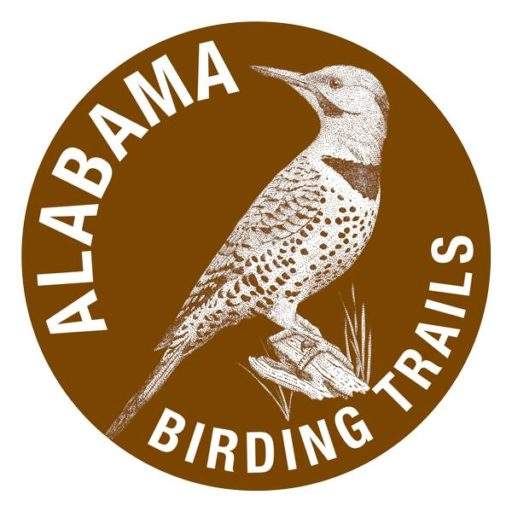Appalachian Highlands | Jefferson | Best Seasons: Fall | Spring | Winter
Tannehill State Historical Park spans three counties and has more than 1,500 acres available for outdoor recreation, such as hiking, swimming, and birding. The park is home to iron furnaces that date back to 1830. The furnaces, once used by the Confederate States during the Civil War, were located in the park on the banks of rushing Roupes Creek. Most of the park is level and relatively open, with only one significant hill on the entire property. The park is criss-crossed by paved, gravel, and dirt roads, which make virtually the entire park easily and quickly accessible to visitors.
Birding at the park begins as soon as you start your excursion along the 1.3-mile-long entrance road. A wooded, steadily flowing stream separates the entrance and exit roads. There is parking available on both the left and right side of the entrance road. You can find the parking areas by looking for a historical marker that is close to both lots.
In season, you should have Northern Parula and Yellow-throated Warblers, Louisiana Waterthrushes, Belted Kingfishers, Yellow-throated and Red-eyed Vireos, Hoooded and Kentucky warblers, and Wood Thrushes in the area. Many species will be found bathing and drinking along the banks of the stream, particularly when the flow is relatively slow. During the migrating season, the woods at Tannehill come alive with the melodies of transient songbirds.
Follow the entrance road through the gate (a nominal admission fee is charged here), and take the paved road to the right. Follow the paved road to the old church and graveyard at the end of the road. This is the highest point in the park and is a relatively quiet and seldom visited area. This spot can be one of the more effective migrant traps and is also a reliable spot to look for birds during the remainder of the year. This is almost always a promising location to find a good selection of local breeders or wintering species. There is a trail along a roadbed beyond the small graveyard, and this can be a good place to look for birds of scrub and late second-growth woods. White-eyed Vireos, Yellow-breasted Chats, and Worm-eating Warblers breed here. The road back down the hill from the church passes by a number of side roads that lead to various cabins, museums, and craft sites. Take the time to look around some of these buildings, but keep your eyes on the woods because a variety of birds may be seen here throughout the year. (You can download a map of the Tannehill trails here)
Down the hill and into the main part of the park, there is a picnic area that is dominated by an open stand of mature pines. This is a fine location for Brown-headed Nuthatches, Pine Warblers, Eastern Bluebirds, Chipping Sparrows, and in winter, Dark-eyed Juncos. A slow stream weaves through this section of the park, separating the picnic grounds, restrooms, and country store/snack bar from old cabins and craft houses. Again, the water attracts many birds to bathe and drink. Across the road from the country store is a bridge over the widest body of water in the park, which is another slow-moving stream. This is an exceptional place to look for Wood Ducks and other water birds, including various herons and Belted Kingfishers. Because the stream is the main attraction for many of the park’s visitors, the resulting activity and noise keeps avian activity to a minimum. The best time to take advantage of this spot is on weekdays and at times when the weather isn’t conducive to outdoor activities in and around the water.
The paved road proceeds northeast, passing through medium-aged hardwoods. Over the hill is a restored farm village, complete with a blacksmith’s shop, barn, corn crib, and a family home. The grounds here host many Eastern Towhees, Brown Thrashers, Grey Catbirds, Carolina Wrens, Eastern Bluebirds, Eastern Phoebes, and other birds of open rural areas. Look for Eastern Wood Pewees, Great Crested Flycatchers, and several species of woodpeckers in the trees above.
Farther northeast is the Grist Mill Trail, a .7 mile, level walk along an old roadbed. This attractive trail is productive for spring wildflowers and a good variety of hardwood-forest songbirds. Near the end of the trail is the grist mill itself. The fast-moving stream is a sure a spot to find Louisiana Waterthrushes in Alabama.
Heading just a bit farther northeast along the road is another site with picnic pavilions, restrooms, and a food-service building. There is an open parking area here, which is a good place to see Eastern Kingbirds. Still farther along this road is another small stream and open area. This is a good location to see Wild Turkeys in the early mornings and late afternoons.
Red-tailed, Red-shouldered, and Cooper’s Hawks are permanent residents and may be found anywhere at Tannehill. Great Horned Owls nest here, and Barred Owls are residents in the bottomlands. Look for Eastern Screech-Owls where woodpeckers are found.
GPS: 33.2544341 -87.066115
12632 Confederate Parkway
McCalla, AL 35111
(205) 477-5711
Site Accessibility
The park has a long, paved trail. Sections of the trail have a fairly steep incline, but much is reasonably level. There are multiple paved parking areas and some of the park can be birded at least somewhat successfully by car.
From I-59/20 in western Jefferson County, take exit 100 (Abernant/Bucksville – fuel and food available at and near the exit) and turn SE on AL 216 East. In .2 mile follow onto Bucksville Road, and in .4 mile bear right onto Tannehill Parkway. In 1.4 miles, turn right, then left for 1.3 miles to arrive at the park.
Amenities Available: Camping (tent/RV), Gravel or Dirt Trails, Lodging (hotel/cabins), Paved Trails, Picnic Tables, Restrooms, Wheelchair Accessible
Nearby Sites
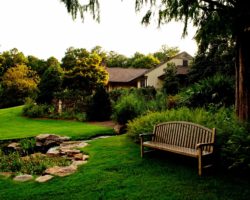
Aldridge Gardens
Aldridge Gardens is a 30-acre former private home, 5 acre lake, gardens, and grounds now owned by the city of Hoover that has been converted to use as a botanical garden. The best time for serious birding attention here is during migration.
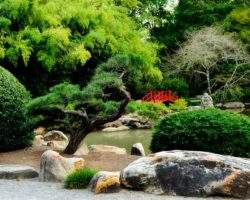
Birmingham Botanical Gardens
One of the best and most-visited sites for songbirds in the Birmingham area, particularly in spring and fall migration. The Birmingham Botanical Gardens should be high on the “must-see” list for anyone interested in birding in the Birmingham area. Co …
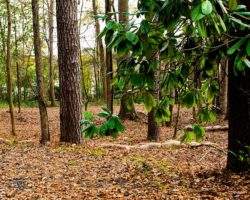
Birmingham Zoo
Located within the 200 wooded acres of Lane Park, the Birmingham Zoo is one of Alabama’s most-visited tourist locations, as well as being a surprisingly productive place for year-round birding. The best birding on the grounds exists outside the Zoo i …
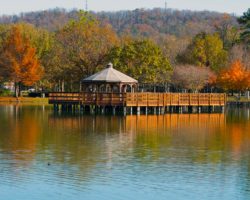
East Lake Park
East Lake Park is one of the best places in the Birmingham area to see birds, because it has a variety of natural features that provide food, water and shelter for a wide range of species. Using water from Roebuck Springs and Village Creek, this 45-a …

Five Mile Creek Greenway Brookside
The Five Mile Creek Greenway, as it passes through the small historic community of Brookside, provides access to the banks Five Mile Creek for about 3 miles. The Greenway trail begins at the end of the Bensko Park parking lot and winds along via a wi …
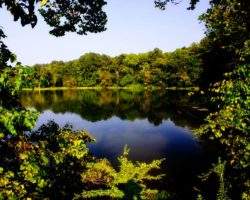
Lake Purdy
Lake Purdy is a 990-acre reservoir on the Little Cahaba River which provides drinking water for the City of Birmingham. Surrounded by protected woodlands, the lake and its environs have become one of those rare birding destinations that is always int …
